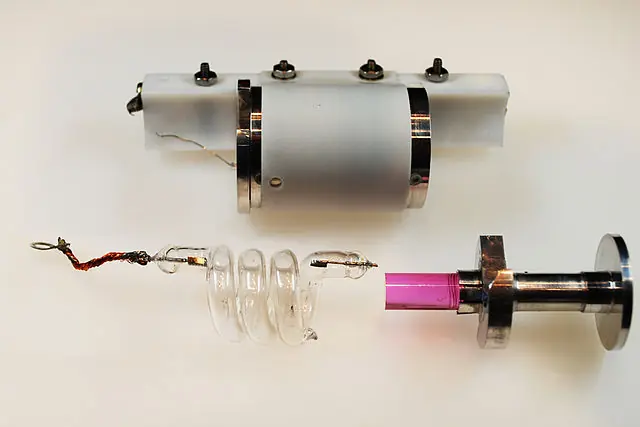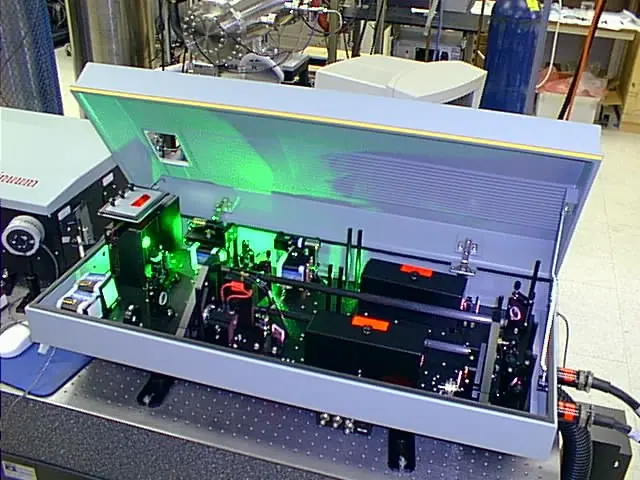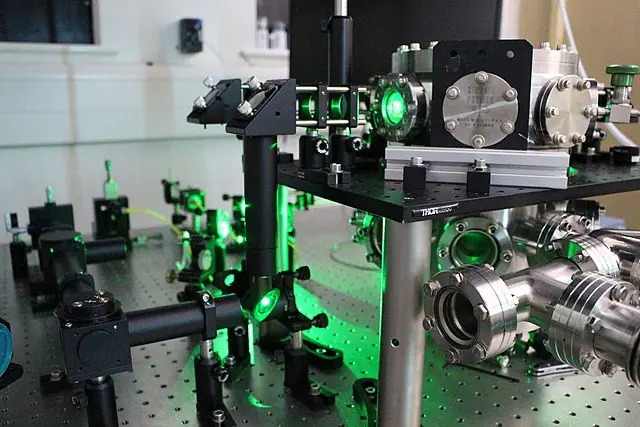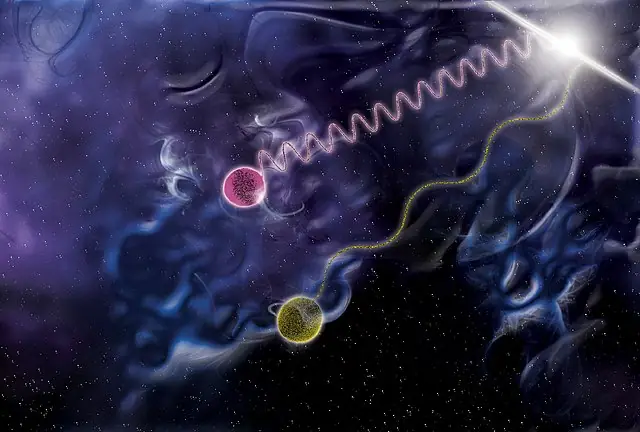What Is A Ruby Laser?

A ruby laser is a type of laser that emits a beam of red light with a wavelength of around 694.3 nanometers. It is named after the ruby crystal that is used as the active medium for the laser, which is the material that amplifies the light and allows the laser to function.
Ruby lasers were some of the first lasers to be developed and have been used for a variety of applications, including laser cutting and welding, military targeting, and medical treatments. They are also used in scientific research and have been instrumental in the development of other types of lasers.
The basic principle behind a ruby laser is stimulated emission, which is the process by which photons (particles of light) are released from an excited atom or molecule. When an atom or molecule is excited by a high-energy photon or other means, it can become unstable and release its excess energy in the form of a lower-energy photon. This process is known as spontaneous emission.
However, if the atom or molecule is surrounded by other atoms or molecules that are also excited, they can stimulate the emission of more photons, which amplifies the light and creates a laser beam. This process is known as stimulated emission, and it is what makes a laser different from other light sources.
In a ruby laser, the active medium is a crystal of aluminum oxide (Al2O3) doped with chromium (Cr). The crystal is cut in the shape of a cylinder and coated with a reflective material on the ends, which forms a resonant cavity for the light. The crystal is placed between two mirrors, one of which is partially transparent and allows the laser beam to pass through.
When an electrical current is applied to the crystal, the chromium ions become excited and release their excess energy in the form of photons. These photons stimulate the emission of more photons from the other excited chromium ions, which amplifies the light and creates a laser beam. The beam bounces back and forth between the mirrors, amplifying even more as it passes through the crystal.
One of the unique features of a ruby laser is that it can only produce a single wavelength of light, which is why it appears red. Other types of lasers, such as helium-neon lasers or diode lasers, can produce multiple wavelengths or a continuous spectrum of light.
Ruby lasers have a number of advantages and disadvantages compared to other types of lasers. One of the main advantages is that they are relatively simple and easy to construct, which makes them relatively inexpensive compared to other lasers. They also have a high power output, which makes them suitable for many applications.
However, ruby lasers have a number of limitations, including a relatively short lifespan, a low efficiency, and a limited wavelength range. They also require a lot of energy to operate, which makes them less efficient compared to other lasers.






